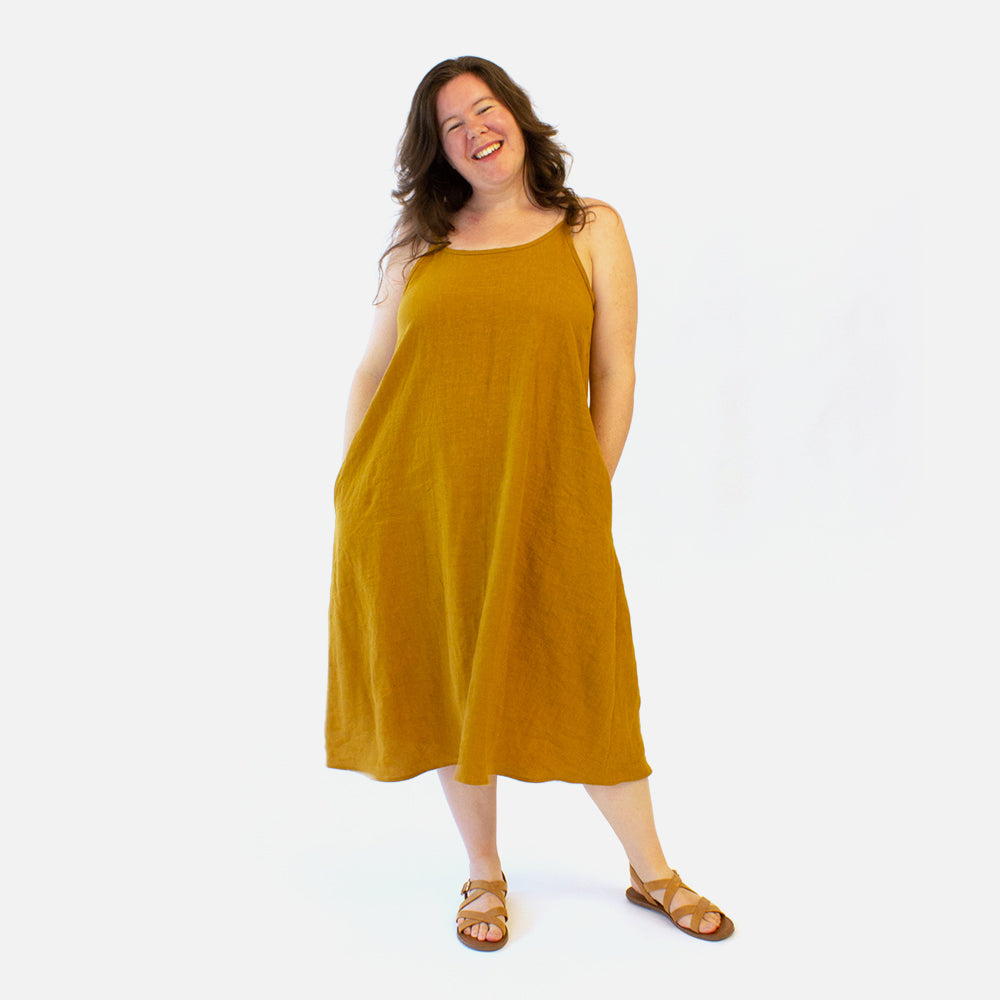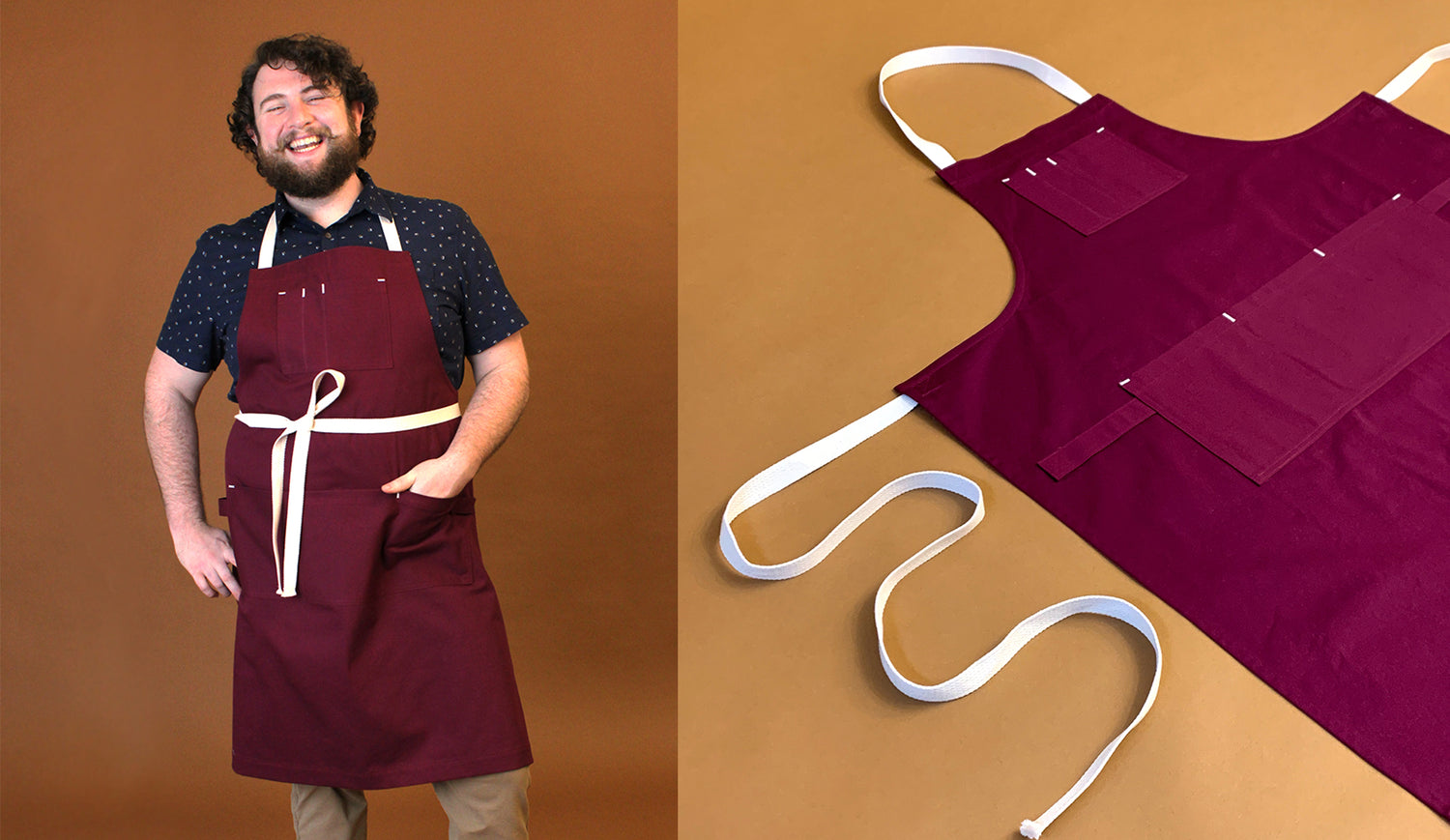 Today is the third installment in the Blackwood Cardigan Sewalong! In case you missed the first few posts, we have covered how to grade between sizes, how to do a quick 'cheater' full bust adjustment, and how to do a 'full' full bust adjustment, both on a bodice without any darts. Now, we are going to cover how to adjust the width of the sleeve for larger arms. This is called a full bicep adjustment.
The Blackwood Cardigan has slim sleeves designed for layering under jackets and giving a nice, close fit. Because the pattern is designed for fabrics with plenty of stretch, most people will be fine with the sleeve as-is. That said, some of you may wish to get more room for layering over long sleeve shirts or want to add width if sleeves typically fit too tight on you.
Today is the third installment in the Blackwood Cardigan Sewalong! In case you missed the first few posts, we have covered how to grade between sizes, how to do a quick 'cheater' full bust adjustment, and how to do a 'full' full bust adjustment, both on a bodice without any darts. Now, we are going to cover how to adjust the width of the sleeve for larger arms. This is called a full bicep adjustment.
The Blackwood Cardigan has slim sleeves designed for layering under jackets and giving a nice, close fit. Because the pattern is designed for fabrics with plenty of stretch, most people will be fine with the sleeve as-is. That said, some of you may wish to get more room for layering over long sleeve shirts or want to add width if sleeves typically fit too tight on you.
 This post is part of a sewalong for the Blackwood Cardigan. You can grab your copy of the Blackwood here.
Do you need a full bicep adjustment? First, you need to measure the circumference of your arm at the widest point. This is usually at the bicep.
This post is part of a sewalong for the Blackwood Cardigan. You can grab your copy of the Blackwood here.
Do you need a full bicep adjustment? First, you need to measure the circumference of your arm at the widest point. This is usually at the bicep.
 Next, measure your pattern piece at the widest part. Decide how much ease (extra fabric) you want in your sleeve. Knit patterns often have negative ease, or just a little bit of ease. The Blackwood Cardigan is designed with 1/2" of ease. Fitted woven sleeves typically have 1-3" of ease.
Next, measure your pattern piece at the widest part. Decide how much ease (extra fabric) you want in your sleeve. Knit patterns often have negative ease, or just a little bit of ease. The Blackwood Cardigan is designed with 1/2" of ease. Fitted woven sleeves typically have 1-3" of ease.
 Your bicep measurement - the sleeve measurement + the amount of ease you want = your adjustment amount
For example. Let's say my bicep measures 14". My sleeve measures 14" across (not counting the seam allowance). I want an ease of 1", so my calculation is 14-14+1=1".
Now that we know how much we need to adjust for, we can get started!
I like to trace my pattern piece onto a new piece of paper or print out a second one. If you are adding more than 1", you will need your original pattern piece later.
Your bicep measurement - the sleeve measurement + the amount of ease you want = your adjustment amount
For example. Let's say my bicep measures 14". My sleeve measures 14" across (not counting the seam allowance). I want an ease of 1", so my calculation is 14-14+1=1".
Now that we know how much we need to adjust for, we can get started!
I like to trace my pattern piece onto a new piece of paper or print out a second one. If you are adding more than 1", you will need your original pattern piece later.
 Next, draw a line from the middle of the sleeve cap to the bottom of the sleeve, parallel to the grainline. Draw a second line perpendicular to the first at the widest part of the sleeve.
Next, draw a line from the middle of the sleeve cap to the bottom of the sleeve, parallel to the grainline. Draw a second line perpendicular to the first at the widest part of the sleeve.
 Now, cut these lines, leaving a little bit of paper right at the seam allowance. Clip into the seam allowance, too, so we can pivot the paper easily.
Now, cut these lines, leaving a little bit of paper right at the seam allowance. Clip into the seam allowance, too, so we can pivot the paper easily.
 Anchor the bottom of the sleeve with your finger or a tack. Push the top of the sleeve down and the sides out. Your pattern will start to overlap in the middle and a gap will form.
Anchor the bottom of the sleeve with your finger or a tack. Push the top of the sleeve down and the sides out. Your pattern will start to overlap in the middle and a gap will form.
 Keep moving the pieces until your gap is as wide as your adjustment amount.
Keep moving the pieces until your gap is as wide as your adjustment amount.
 Fill in the new space with paper, leaving excess paper at the top and bottom of the sleeve for the next steps.
Fill in the new space with paper, leaving excess paper at the top and bottom of the sleeve for the next steps.
 Now, things diverge a bit here. If you have added up to 1" to your sleeve, you can simply smooth out the sleeve cap and bottom edge and be on your way. The height of the sleeve cap hasn't changed so drastically that we need to redraw it, especially if you are working with a knit. If you have added more than 1" to your sleeve, you will need to re-draw your sleeve cap and adjust the bodice pieces.
For those of you who added up to 1"
Smooth out the sleeve cap by drawing a new curve at the top.
Now, things diverge a bit here. If you have added up to 1" to your sleeve, you can simply smooth out the sleeve cap and bottom edge and be on your way. The height of the sleeve cap hasn't changed so drastically that we need to redraw it, especially if you are working with a knit. If you have added more than 1" to your sleeve, you will need to re-draw your sleeve cap and adjust the bodice pieces.
For those of you who added up to 1"
Smooth out the sleeve cap by drawing a new curve at the top.
 Straighten out the bottom edge by drawing a straight line.
Straighten out the bottom edge by drawing a straight line.
 Cut off the excess paper and you are good to go!
Cut off the excess paper and you are good to go!
 For those of you adding more than 1"
You will notice that your sleeve cap is quite distorted and short looking if you make a big adjustment. We need to get the nice curve it had to begin with back.
For those of you adding more than 1"
You will notice that your sleeve cap is quite distorted and short looking if you make a big adjustment. We need to get the nice curve it had to begin with back.
 Using the original pattern piece as a guide, trace the original sleeve cap curve and straighten out the bottom edge.
Using the original pattern piece as a guide, trace the original sleeve cap curve and straighten out the bottom edge.
 Now, trim off the excess paper and we have our new sleeve! But wait, there's more. We also need to change the bodice to accommodate the extra fabric in the new sleeve cap, otherwise, you will have a hard time easing all that extra fabric into your shoulder seam. You have two options here.
1. You can deepen the arm hole by half of the amount you added to your sleeve.
Now, trim off the excess paper and we have our new sleeve! But wait, there's more. We also need to change the bodice to accommodate the extra fabric in the new sleeve cap, otherwise, you will have a hard time easing all that extra fabric into your shoulder seam. You have two options here.
1. You can deepen the arm hole by half of the amount you added to your sleeve.
 2. You can add width to the side seam by half of the amount you added to your sleeve.
2. You can add width to the side seam by half of the amount you added to your sleeve.
 Lastly, you could do a combination of both!
Lastly, you could do a combination of both!
I hope this post on how to do a full bicep adjustment has been helpful! I urge you to try one if you are bothered by tight sleeves on a regular basis. The adjustment is fairly simple and it can make a big difference. Tomorrow I am going to share how to do a narrow or broad shoulder adjustment. I hope you check it out. Do you have a different method for making a full bicep adjustment? I'd love to hear about it!






